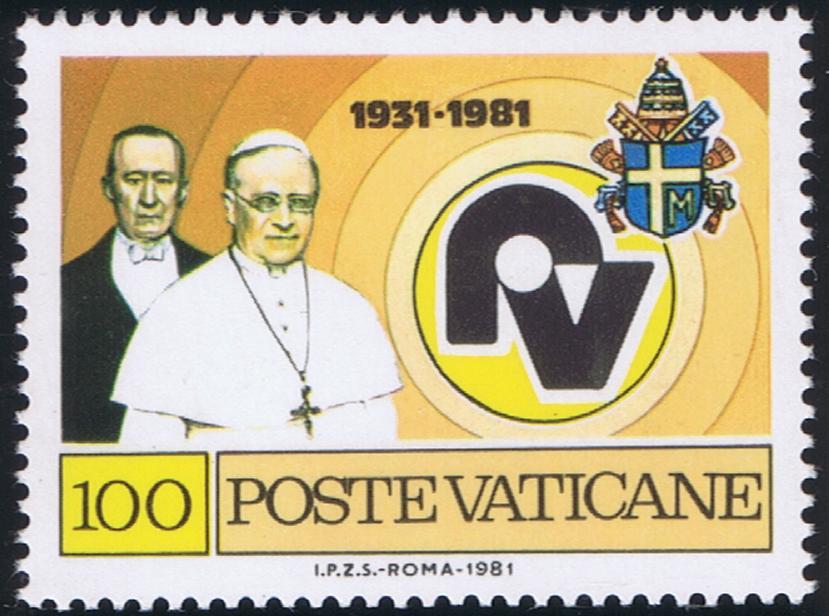
Home
Beginning with the fall of the Roman/Papal States in 1870, through the establishment of the Vatican City State in 1929, there were five popes that were self-described “Prisoners of the Vatican”. Today's article looks at all five of these popes, with a particular focus on the four who served in the early years of the twentieth century. The four popes from 1900 to 1929 carry us to the signing of the Lateran Pacts, the treaty which settled the “Vatican Question” and reestablished the temporal power of the Holy See in the form of the smallest country on earth, the Vatican City State. Pope Pius IX was the pope at the time the Holy See lost its temporal power with the fall of Rome and the end of the Papal States. He was reviewed on some detail in one of our earlier excerpts of Popes on Stamps. Beginning with his successor, Leo XIII, we leave the 19th century and enter the 20th century. Leo XIII: when elected pope in 1878, the “sickly” Cardinal Gioacchino Vincenzo Raffaele Luigi Pecci took the name Leo XIII. He went on to serve as pontiff until 1903, a term of over 25 years (which, at the time of his death at the age of 93, was the third-longest papal term). He is sometimes called the “Social Pope" or "Pope of the Workers" as he tried to define the role of the Catholic Church in modern times. He is perhaps best known for his encyclical “Rerum Novarum”, proclaimed in 1891, which framed the rights of workers while affirming the rights to property and free enterprise. 

 Pope Leo XIII: Centennial of Encyclical "Rerum Novarum" Scott 882-884 (1991)  Pope Leo XIII: Bicentenary of Birth Scott 1445 (2010) Pius X: Cardinal Giuseppe Melchiorre Sarto was the much-loved Bishop of Venice at the time of his election as pope. As he left for the Papal Conclave, he promised to return to the city—which did not happen during his lifetime but did take place with the return of his body to the city in 1960. Serving as Bishop of Rome from 1903 to 1914, Pius X was a traditionalist who opposed modernist interpretations of Catholic doctrine, although he did promote liturgical reforms and scholastic theology. He was canonized a saint in 1954. 

 Canonization of Pope Pius X Scott 182-184 (1954) 

 Return of Relics of Pope Pius X to Venice Scott 281-283 (1960)  Pope Pius X: Centenary of Death Scott 1572 (2014) Benedict XV: elected pope in 1914, the reign of Benedict XV was largely overshadowed by World War I. During his pontificate, he declared the neutrality of the Holy See and attempted to mediate peace initiatives, which were rebuffed. Following the war, his attention turned to efforts to relieve the resulting humanitarian crisis in Europe. He died in 1922. 


 Pope Benedict XV Consecrates Archbishop Eugenio Pacelli (the future Pope Pius XII) Scott 80-84 (1943)  Centenary of the Restoration of Diplomatic Relations with Poland (Pope Benedict XV on the right) Scott 1715 (2019) Pius XI: the singular event of the papacy of Pius XI was the signing of the Lateran Pacts with Italy in 1929, forming the Vatican City State in 1929. Serving as pope from 1922 through 1939, Pius XI attempted to cement the temporal status of the newly-created state by establishing diplomatic relations with the many new governments of Europe formed following World War I through the issuance of concordats (treaties between the Vatican and secular governments on matters of mutual interest), a practice that met with variable success. From a philatelic perspective, during the pontificate of Pius XI and with the establishment of the Vatican City State, we see a massive increase in the number of stamps picturing the pope, specifically the reigning pope. Images of the popes on stamps prior to Pius XI were primarily associated with stamp issues recalling Church history, events tied to the popes, and other cultural depictions. Starting with the first Vatican City stamp issue in 1929, the pope starts to appear on the stamps of Vatican City as part of regular stamp issues (definitive sets including espresso stamps), on airmail stamps, and on commemorative stamps chronicling events of their pontificates (for example, papal travels). As we shall see in subsequent excerpts of this series, it would be very large task to picture every stamp portraying the popes from 1929 to the present day. The sampling of stamps below for Pope Pius XI show the mix of stamps picturing the pope on regular issues and espresso stamps, and then his image on commemorative stamps: 

 

 
 First Vatican Stamps: Conciliation Issue Scott 8-13, E1-E2 (1929) 
 
 Gardens and Medallions Issue Scott 28-31 (1933) 
 25th Anniversary of the Lateran Pacts Scott 174-175 (1954)  50th Anniversary of the Radio (Pope Pius XI with Guglielmo Marconi) Scott 681 (1981)  80th Anniversary of the Vatican Observatory Scott 1606 (2015) |